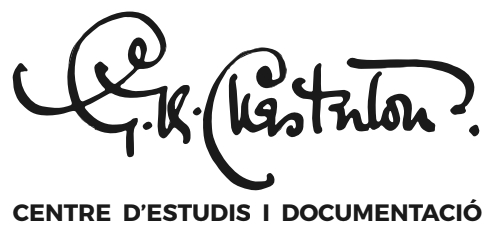Infographics
The Napoleon of Notting Hill
The infographic portrays the fictional realm enclosed in G. K. Chesterton’s first novel, The Napoleon of Notting Hill, published in 1904. It contains a description of the novel and its main lines of interpretation: the political one (anti-imperialism), the aesthetic one (medievalism), the moral one (dualism) and the one based on the opposition between tradition and modernity.
The infographic includes:
- A note on the context of the novel (Chesterton’s London)
- The circumstances involved in its publication
- A selection of book covers
- 8 images which depict London at the time of the publication of the novel
- A map which pinpoints the location of the battles
- A timeline of the novel in which its books and chapters are outlined
Chesterton’s repercussion, a journey from England to Catalonia: press, agents and mediators
G. K. Chesterton’s repercussion in Catalonia is mainly due to the efforts of journalists in the press. Due to the fact he first draws attention in the context of the Great War, when he campaigned on the side of the allies, he is especially present in newspapers and current affairs magazines. As a representative of a controversial but brilliant journalism, and a paradigm of British article writing, he is admired by a great deal of writers in the Catalan press throughout the Primo de Rivera dictatorship and beyond. On another note, the influence which French writers, journalists and literary critics had on this repercussion can be explained by the Francophilia of literary circles at the time. Following 1922, the year of Chesterton’s conversion to Catholicism, the renouveau catholique (followed closely by writers such as Josep M. Junoy and Christian-aligned media like the newspaper El Matí) and the author’s Franciscanism helped in the dissemination of his spiritual work. The infographic summarizes the main agents and mediators (writers, journalists, critics, translators, editors and institutions) and the periodical publications involved in this dissemination, from England to Catalonia via France, and pays special attention to the inter-war period, when Chesterton’s repercussion across the whole of Europe reached its peak.
Chesterton’s presence in Catalan literary circles is due to the circulation and dissemination of his articles, essays and contributions through periodical publications (be they English, French or Catalan), as well as his stay in Barcelona in May 1926, at the invitation of the PEN Club.
